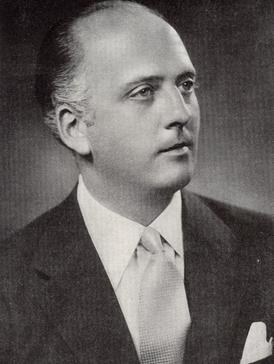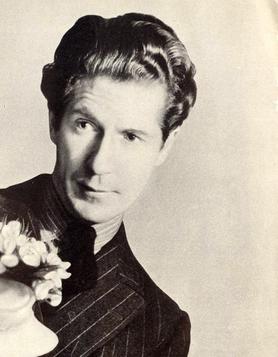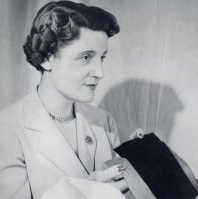
Philip Anthony Treacy is an Irish haute couture milliner, or hat designer, who has been mostly based in London for his career, and who was described by Vogue magazine as "perhaps the greatest living milliner". In 2000, Treacy became the first milliner in eighty years to be invited to exhibit at the Paris haute couture fashion shows. He has won British Accessory Designer of the Year at the British Fashion Awards five times, and has received public honours in both Britain and Ireland. His designs have been displayed at the Victoria and Albert Museum and the Metropolitan Museum of Art.

Hat-making or millinery is the design, manufacture and sale of hats and other headwear. A person engaged in this trade is called a milliner or hatter.

A hat is a head covering which is worn for various reasons, including protection against weather conditions, ceremonial reasons such as university graduation, religious reasons, safety, or as a fashion accessory. Hats which incorporate mechanical features, such as visors, spikes, flaps, braces or beer holders shade into the broader category of headgear.

The Musée des Arts Décoratifs is a museum in Paris, France, dedicated to the exhibition and preservation of the decorative arts. Located in the city’s 1st arrondissement, the museum occupies the Pavillon de Marsan, the north-western wing of the Palais du Louvre. With approximately one million objects in its collection, the Musée des Arts Décoratifs is the largest museum of decorative arts in continental Europe. It is one of three museums operated by the non-profit arts association MAD, founded in 1882.

Stephen Jones OBE is a British milliner based in London, who is considered one of the most radical and important milliners of the late 20th and early 21st centuries. He is also one of the most prolific, having created hats for the catwalk shows of many leading couturiers and fashion designers, such as John Galliano at Dior and Vivienne Westwood. His work is known for its inventiveness and high level of technical expertise. Jones co-curated the 2009 exhibition Hats: An Anthology for the Victoria and Albert Museum.

Jack Lenor Larsen was an American textile designer, author, collector and promoter of traditional and contemporary craftsmanship. He was noted for bringing fabric patterns and textiles to go with modernist architecture and furnishings. Some of his works are part of permanent collections at museums, including the Museum of Modern Art, the Victoria and Albert Museum, the Art Institute of Chicago, the Musée des Arts Décoratifs at the Louvre, and the Minneapolis Institute of Art, which has his most significant archive.
Graham Smith is a milliner from Kent, England. Beginning his career at a time when hats were an everyday essential for fashionable women, he worked with leading couturiers in Paris and London, later establishing his own brand and also working with mainstream fashion brands such as Kangol.
Deep Blue Sea is a hat designed by Australian milliner, Ann-Maree Willett, which is made from Australian wool felt and set with 26 precious opals from Lightning Ridge, weighing a total of 1447.5 carats.
James "Jimmy" Wedge is a British fashion designer, milliner and fashion photographer.

Charles Southey Creed was a British fashion designer. Born into the longstanding tailoring house of Henry Creed & Company in Paris, he launched his eponymous label in London in 1946. The first elected member of the Incorporated Society of London Fashion Designers, he had success in both Britain and the United States.

Otto Lucas was a German-born, London-based milliner. Running a hugely successful hatmaking studio in London between the 1930s and the 1970s, his business supplied both major stores throughout Europe, the US and Australia and hats for private clients such as Greta Garbo and Wallis Simpson. His career was cut short when he was killed in a plane crash over Belgium in October 1971.

Aage Thaarup (1906–1987) was a Danish-born milliner who ran a celebrated hatmaking business in London between the 1930s and 1970s.

A draped turban or turban hat is a millinery design in which fabric is draped to create headwear closely moulded to the head. Sometimes it may be stiffened or padded, although simpler versions may just comprise wound fabric that is knotted or stitched. It may include a peak, feather or other details to add height. It generally covers most or all of the hair.

A cartwheel hat is a hat with a wide-brimmed circular or saucer-shaped design. It may be made in a variety of materials, including straw or felt and usually has a low crown. It may be similar to the picture hat and halo-brimmed hat in shape. Typically, it is worn at an angle to show off the curve of the brim, rather than being worn at the back of the head in the manner of a halo hat.

For the French general and diplomat, see Claude Carra Saint-Cyr
Jean Barthet (1920–2000) was a French milliner who first rose to prominence in the 1950s as hat maker to Hollywood and French film stars, also designing hats for films such as The Young Girls of Rochefort.

A mushroom hat is a millinery style in which the brim of the hat tilts downwards, resembling the shape of a mushroom. It is a style that first emerged in the 1870s and 1880s, when it was usually made of straw. It became fashionable again from around 1907 to the late 1920s; these versions featured a distinctly downturned brim although the size and shape of the crown varied according to prevailing fashions.

A lampshade hat is a millinery design in which the hat has a small circular crown – typically flat, but sometimes rounded – and flares outwards to create a cone-like profile. In shape, it may have some similarities to the pillbox and bucket hat, both of which were popular at around the same time, although the classic lampshade design is longer and more flared than a pillbox and is generally made of stiffer material than a bucket hat.
Reed Crawford (1924-2006) was a British milliner of the 1950s and 1960s. He produced a series of high-fashion designs that matched the Swinging London mood of the 1960s, including helmet-style cloche hats and designs in unusual material combinations, such as plastic and fur. He became especially associated with couture, working with the designer John Cavanagh from 1959 and joining the Incorporated Society of London Fashion Designers as an associate member from 1961.

Karl Erik Braagaard was a Danish-born American milliner, who had Erik stores in Paris, New York and London from the 1930s to 1950s.














